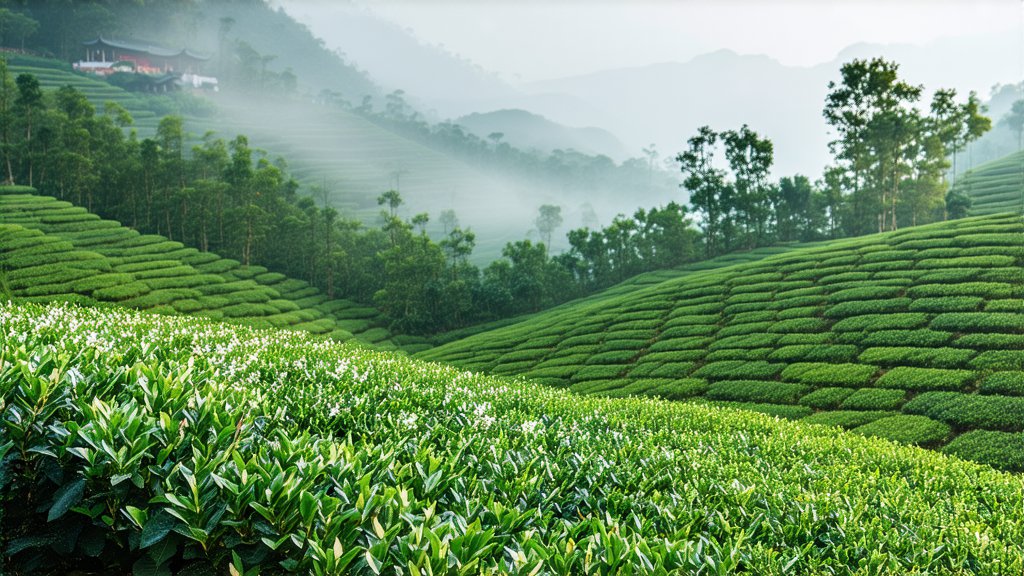
Nestled within the verdant landscapes of China's Fujian province lies a gem of the tea world that has captivated connoisseurs for centuries—Fujian White Peony Tea. This exquisite tea, also known as Bai Mudan, is a testament to the delicate balance between nature's bounty and human artistry, embodying the essence of Chinese tea culture.
A Glimpse into History
The origins of White Peony Tea can be traced back to the early Tang Dynasty (618-907 AD), during which it was revered as an imperial offering. Its name, "Bai Mudan," translates to "White Peony," reflecting both its pale color and the floral delicacy akin to the peony flower, a symbol of prosperity and elegance in Chinese culture. Over time, this tea evolved, becoming a beloved staple among tea enthusiasts worldwide.
Varieties and Characteristics
Fujian White Peony Tea falls under the broader category of white teas, characterized by its minimal processing, which preserves its natural flavors and health benefits. It comprises two main types based on leaf selection:
-
Bai Mudan Grade I (Silver Tips Peony): This premium grade features young shoots adorned with silvery downy buds, resembling peony blossoms. It offers a subtle sweetness and a hint of floral notes.
-
Bai Mudan Grade II: Harvested from slightly more mature leaves and buds, this variety presents a richer body with earthy undertones complementing the floral sweetness.
Both grades share a common trait—a light, refreshing profile that makes them ideal for those seeking a gentle introduction to the world of tea.
The Art of Crafting
The production of Fujian White Peony Tea is an intricate dance with nature, demanding precision and respect for the leaves. Here’s a glimpse into its meticulous crafting process:
-
Withering: Freshly picked leaves and buds are spread thinly on bamboo mats under the sun or in shaded areas, allowing them to wither slowly. This step reduces moisture content while enhancing the tea's natural aroma.
-
Fixation: The withered leaves undergo a brief steaming or baking process to halt oxidation, preserving their pale hue and fresh flavor.
-
Drying: Finally, the tea is gently dried, often through sun exposure or low-temperature oven drying, to achieve the perfect moisture balance.
Each step is carried out with utmost care, ensuring that the final product embodies the purity and elegance synonymous with Bai Mudan.
Sensory Exploration: How to Appreciate White Peony Tea
To fully appreciate the nuances of Fujian White Peony Tea, one must engage all senses in a ritualistic manner:
-
Visual Appeal: Observe the dry leaves, noting their silver tips and greenish hues. Upon steeping, watch them unfurl gracefully, revealing a pale gold liquor.
-
Aroma: Inhale deeply before sipping to catch whiffs of floral sweetness intertwined with subtle fruity or herbaceous notes.
-
Flavor Profile: Take small sips, allowing the tea to coat your palate. Note the initial sweetness followed by a lingering aftertaste that may hint at melon, apricot, or even a touch of honey.
-
Mouthfeel: Pay attention to the texture; a well-crafted Bai Mudan should feel silky smooth with a velvety finish.
-
Aftertaste: Savor the lasting impression left on your palate, which should be clean, refreshing, and inviting another sip.
Conclusion
Fujian White Peony Tea is more than just a beverage; it's an experience that connects drinkers to centuries-old traditions and the tranquil beauty of the Fujian landscape. Its simplicity belies a depth of character that invites exploration and appreciation. As you embark on your journey with this ethereal tea, remember that each cup tells a story—one of patience, craftsmanship, and the enduring charm of Chinese tea culture.